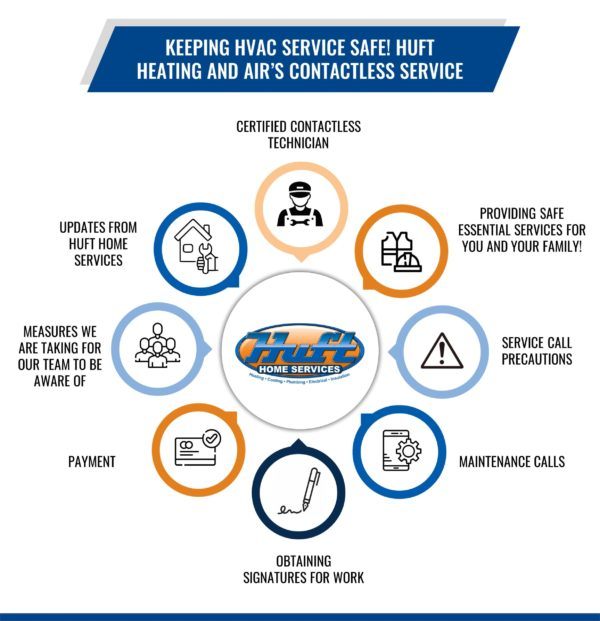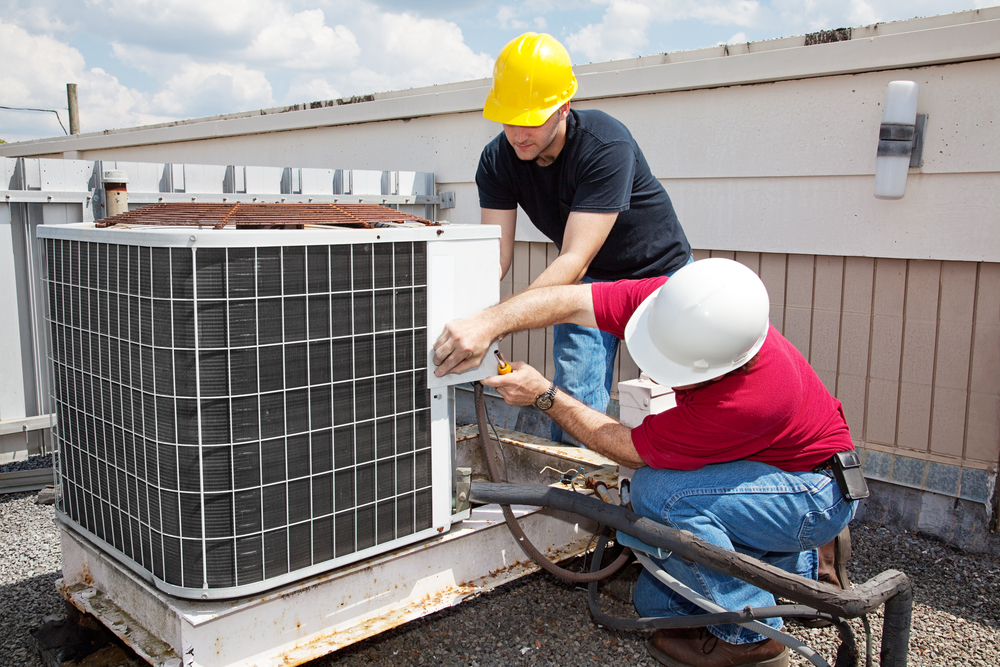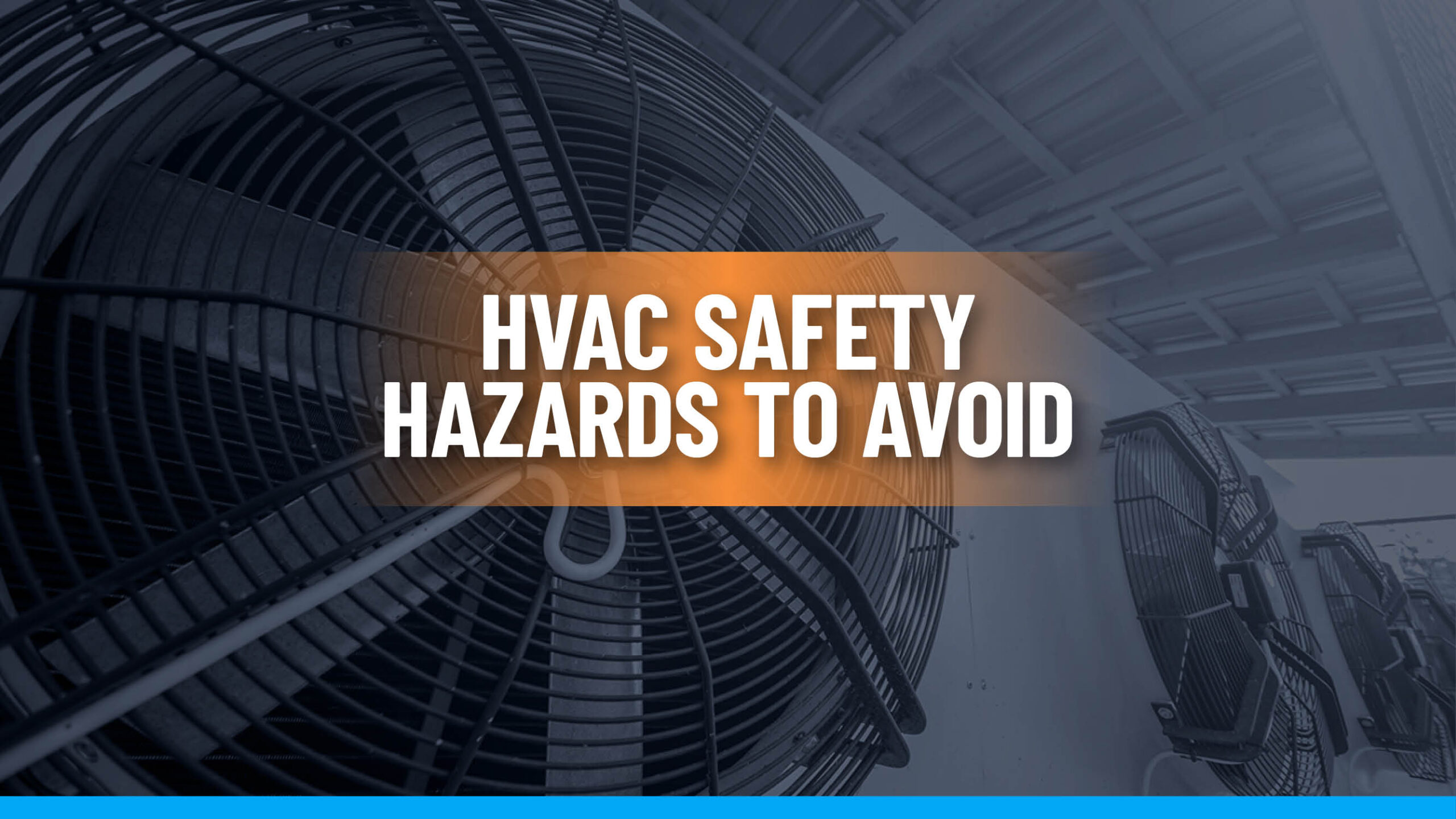In “ensuring safety in HVAC repair services,” you will discover the importance of prioritizing safety when it comes to HVAC repair. The article focuses on Diamond Air Design, a reputable HVAC repair company in Pensacola FL, and highlights their commitment to ensuring the safety of their technicians and customers. By adhering to industry regulations and implementing strict safety protocols, Diamond Air Design not only provides excellent HVAC repair services but also creates a safe environment for everyone involved. With their expertise and dedication, you can trust them to handle your HVAC repair needs efficiently and safely.

This image is property of hufthomeservices.com.
Safety Precautions in HVAC Repair Services
Importance of Safety in HVAC Repair
When it comes to HVAC repair services, safety should always be the top priority. Whether you are a technician working on the system or a homeowner attempting a DIY repair, understanding and implementing safety precautions is crucial for protecting yourself, others, and the property involved. HVAC systems can pose various hazards, including electrical risks, exposure to harmful substances, and the potential for accidents. By prioritizing safety measures, you can minimize the risks and ensure a smooth and secure repair process.
Potential Hazards in HVAC Repair
HVAC repair services come with their fair share of potential hazards that need to be recognized and addressed. One of the major hazards is the electrical systems within HVAC units. These systems carry a high voltage, which can lead to severe injuries or even fatalities if mishandled. Additionally, HVAC repair may involve working with refrigerants, which can be harmful if not handled properly. These substances can cause skin irritation, respiratory problems, or even frostbite if in contact with bare skin. Furthermore, falls, accidents from improper use of tools, and fire hazards are also risks associated with HVAC repair work. It is essential to be aware of these potential threats and take appropriate safety precautions to minimize the risks.
Safety Equipment and Protective Gear
The use of safety equipment and protective gear is a crucial aspect of HVAC repair services. Investing in adequate safety tools and personal protective equipment (PPE) is essential to protect yourself and others involved in the repair process. Safety goggles, gloves, and masks are a few examples of PPE that must be worn to prevent any contact with hazardous substances. Additionally, non-slip footwear should be worn to prevent slip and fall accidents. Ensure that you have the necessary safety equipment, such as fire extinguishers, first aid kits, and lockout-tagout devices properly available. By utilizing the appropriate protective gear and equipment, you can significantly reduce the risk of injuries during HVAC repair.
Training and Certification
Qualified Technicians
Having qualified technicians handle HVAC repairs is crucial for ensuring safety. Technicians should possess the necessary knowledge, skills, and experience to handle different types of repairs effectively and safely. Proper training helps technicians understand potential hazards, follow safety protocols, and assess the risks associated with HVAC repair work. By entrusting HVAC repairs to qualified professionals, you can have peace of mind knowing that safety is being prioritized at all times.
Certifications and Licenses
certifications and licenses play a significant role in demonstrating a technician’s competence and expertise in HVAC repair services. Certified technicians have undergone specialized training and have met certain industry standards, ensuring that they are well-equipped to handle repairs safely. Therefore, when choosing an HVAC repair service provider, ensure that their technicians possess the necessary certifications and licenses to guarantee their competence and commitment to safety.
Continuing Education
Continuing education is essential for HVAC technicians to stay up to date with the latest industry standards and safety practices. technology and regulations within the HVAC industry are constantly evolving, and it is crucial for technicians to stay informed and adapt to these changes. By participating in continuing education programs and attending workshops, technicians can enhance their skills, learn about emerging safety practices, and stay ahead of the curve. This commitment to ongoing learning ensures that technicians are equipped with the knowledge and expertise needed to perform HVAC repairs safely.
Proper Tools and Equipment
Importance of Using the Right Tools
Using the right tools is vital for ensuring the safety and efficiency of HVAC repairs. Improper tools can lead to accidents, damage to the HVAC system, and even personal injuries. It is important to understand the specific tools required for each repair task and use them correctly. Using the right tools not only ensures accurate results but also reduces the risk of accidents and hazards associated with using inappropriate equipment. Before attempting any HVAC repair, familiarize yourself with the necessary tools and ensure they are in good working condition.
Routine Maintenance of Tools
Regular maintenance of tools is essential to ensure their proper functioning and safety. Neglected tools can become faulty and pose risks while being used. Inspect your tools regularly for any signs of wear and tear, such as frayed wires or loose handles, and replace them if necessary. It is also important to clean and lubricate tools as per the manufacturer’s instructions to ensure optimal performance and longevity. By keeping your tools in good condition, you can minimize the risk of accidents and enhance the safety of HVAC repair services.
Proper Calibration and Testing
Proper calibration and testing of tools are essential for accurate and safe HVAC repairs. Malfunctioning or incorrectly calibrated tools can lead to inaccurate readings, unsafe repairs, and potential system failures. Before performing any repairs, ensure that your testing and calibration tools are accurate and properly calibrated. This will help you diagnose issues correctly, make informed repair decisions, and ensure the repaired HVAC system functions optimally. Regularly check the calibration of your tools and seek professional assistance if necessary to maintain their accuracy and safety.
Recognizing and Handling Electrical Hazards
Understanding Electrical Systems in HVAC
Electrical systems are an integral part of HVAC units and pose significant hazards during repair services. Understanding the basics of electrical systems in HVAC units is essential for technicians to handle repairs safely. Knowledge of electrical wiring, grounding, and circuitry helps technicians identify potential risks and take appropriate precautions to prevent electrical accidents. Ensure that technicians working on HVAC repairs have the necessary electrical expertise to handle potential electrical hazards effectively.
Lockout-Tagout Procedures
Lockout-Tagout (LOTO) procedures are critical for ensuring the safety of technicians working on HVAC units. LOTO procedures involve isolating the power source and securing it to prevent accidental energization during repair or maintenance. By following LOTO procedures, technicians can avoid electrical shock, burns, and other electrical accidents. These procedures typically involve the use of lockout devices or tags to securely disconnect power sources and indicate that repairs are in progress. Implementing proper LOTO procedures is essential for protecting technicians from electrical hazards.
Electrical Safety Practices
Implementing electrical safety practices is another crucial aspect of ensuring safety in HVAC repair services. These practices include turning off the power supply before starting any repairs, using insulated tools, wearing appropriate personal protective equipment, and following manufacturer guidelines for electrical repairs. It is also important to check for the presence of any live wires or electrical currents using appropriate testing equipment to avoid accidental contact. By adhering to electrical safety practices, technicians can significantly minimize the risks associated with electrical hazards in HVAC repair.

This image is property of donnellymech.com.
Preventing Exposure to Harmful Substances
Understanding HVAC Refrigerants
HVAC repair services often involve working with refrigerants, which can pose health risks if not handled properly. Understanding HVAC refrigerants and their potential hazards is crucial for technicians and homeowners attempting repairs. Refrigerants may be toxic, corrosive, or flammable, and direct contact or inhalation can lead to serious health issues. Knowing the types of refrigerants used in specific HVAC systems, their properties, and safe handling procedures is essential for protecting oneself and others from potential harm.
Proper Handling and Disposal of Refrigerants
Proper handling and disposal of refrigerants are imperative for the safety of technicians, the environment, and compliance with regulations. Refrigerants must be handled with caution, adhering to safety guidelines provided by manufacturers and regulatory agencies. Ensure that technicians are trained in proper refrigerant handling techniques, such as using recovery equipment, avoiding leaks, and following appropriate disposal procedures. By following these guidelines, the release of harmful substances into the environment can be minimized, and the health risks associated with refrigerants can be mitigated.
Personal Protective Equipment for Chemicals
Personal protective equipment (PPE) plays a vital role in protecting technicians from harmful substances encountered during HVAC repairs. When working with refrigerants or other chemicals, technicians should wear gloves, goggles, masks, and protective clothing to prevent direct contact or inhalation. The appropriate choice of PPE is essential to provide effective protection against the specific chemicals involved in the repair process. Technicians should receive training on the proper use and maintenance of PPE to ensure its effectiveness in preventing exposure to harmful substances.
Maintaining Clean and Safe Work Environments
Importance of Cleanliness in HVAC Repair
Maintaining a clean work environment is essential for ensuring safety in HVAC repair services. A cluttered or dirty workspace increases the risk of accidents, such as slips, trips, and falls. It can also hinder the efficiency of repair work and potentially damage equipment. Prioritize cleanliness by keeping the work area organized, free from debris, and properly sanitized. By maintaining a clean workspace, you create a safer environment for technicians and minimize the risk of accidents during HVAC repairs.
Effective Waste Management
Proper waste management is an important aspect of maintaining a safe work environment during HVAC repairs. Waste materials, such as used filters, refrigerant containers, or cleaning chemicals, should be disposed of in accordance with environmental regulations. Implementing effective waste management practices, such as proper storage, labeling, and disposal methods, ensures that hazardous materials are handled safely and responsibly. By properly managing waste, you minimize the risk of environmental contamination and protect the health and safety of technicians.
Preventing Tripping Hazards
Tripping hazards can pose a significant risk during HVAC repair services. Cables, hoses, tools, or debris left on the floor can cause technicians to trip and injure themselves. To prevent tripping hazards, ensure that cables and hoses are properly secured, tools are stored in designated areas, and that work areas are free from unnecessary clutter. Adequate lighting should also be provided to clearly identify potential trip hazards. By removing or securing tripping hazards, you create a safer work environment for technicians and minimize the risk of accidents.

This image is property of intercoast.edu.
Evaluating and Managing Risks
Risk Assessment Procedures
Conducting risk assessments is an essential step in ensuring safety in HVAC repair services. Risk assessments help identify potential hazards, evaluate their likelihood and severity, and determine appropriate control measures. Before starting any repair work, technicians should assess the specific risks associated with the job, such as electrical hazards, chemical exposure, or fall risks. By conducting thorough risk assessments, technicians can implement appropriate safety measures and minimize the potential for accidents or injuries.
Creating Safety Protocols and Guidelines
Establishing safety protocols and guidelines is crucial for maintaining a safe work environment during HVAC repairs. These protocols should outline specific procedures, safety requirements, and best practices to be followed by technicians. Safety guidelines may cover areas such as electrical safety, chemical handling, tool usage, and emergency response. By creating comprehensive and well-communicated safety protocols, technicians can have clear guidelines to follow, ensuring consistent safety practices throughout HVAC repair services.
Emergency Response Planning
Expecting the unexpected is an important part of ensuring safety in HVAC repair services. Emergency situations can arise, such as fire incidents, electrical failures, or accidental chemical exposures. Having a well-defined emergency response plan in place is crucial for protecting technicians, minimizing property damage, and maintaining overall safety during such situations. The emergency response plan should include procedures for evacuations, communication, medical assistance, and coordination with relevant authorities. By preparing and regularly reviewing the emergency response plan, HVAC repair services can respond effectively to unforeseen circumstances.
Safe Lifting and Ergonomics
Proper Lifting Techniques
Safe lifting techniques are essential for preventing musculoskeletal injuries during HVAC repairs. Heavy equipment, HVAC units, or tools may require lifting and carrying, which can strain the muscles and joints if done incorrectly. Technicians should be trained in proper lifting techniques, such as using leg muscles instead of the back, maintaining a straight posture, and avoiding twisting or jerking motions. By following these guidelines, technicians can minimize the risk of back strains, sprains, or other musculoskeletal injuries caused by improper lifting.
Using Mechanical Aids
Using mechanical aids can greatly reduce the physical strain associated with lifting and moving heavy objects during HVAC repairs. Equipment such as dollies, hand trucks, or slings can make lifting and transporting heavy HVAC units or tools more manageable and safer. Technicians should have access to appropriate mechanical aids and be trained in their proper use. By utilizing these aids, the risk of injuries and strains from manual lifting can be significantly reduced.
Preventing Musculoskeletal Injuries
Taking proactive steps to prevent musculoskeletal injuries is essential for maintaining safety in HVAC repair services. Technicians should be encouraged to stretch and warm up before starting work to prepare their muscles for physical activity. Frequent breaks and rotation of tasks can also help prevent repetitive strain injuries. Employers should provide ergonomic workstations, adjustable tools, and proper seating to minimize the risk of strain or discomfort. By prioritizing the prevention of musculoskeletal injuries, HVAC repair services can protect the health and well-being of technicians.

This image is property of www.ftccollege.edu.
Fire Safety
Fire Prevention Measures
Fire prevention measures are crucial for safeguarding technicians, properties, and the surrounding environment during HVAC repairs. Fire hazards can arise from electrical malfunctions, improper handling of flammable substances, or faulty equipment. Avoiding potential fire risks by adhering to electrical safety practices, implementing proper storage and handling of flammable substances, and conducting regular inspections of all HVAC components are important preventive measures. Having fire extinguishers readily available and ensuring access to emergency exits are additional precautions that should be taken. By focusing on fire prevention, HVAC repair services can mitigate the risk of fires and ensure the safety of everyone involved.
Fire Suppression Systems
Fire suppression systems play a vital role in quickly extinguishing or containing fires during HVAC repairs. Installing fire suppression systems, such as sprinkler systems or fire alarms, can significantly minimize the potential damage caused by fires. Regular maintenance and testing of these systems should be conducted to ensure their proper functioning. Additionally, technicians should be trained in the proper operation of fire suppression systems to respond effectively during emergency situations. By having reliable fire suppression systems in place, HVAC repair services can increase the overall safety and protect against potential fire hazards.
Emergency Evacuation Procedures
Having well-defined emergency evacuation procedures is crucial for the safety of technicians and others present during HVAC repairs. In the event of a fire or other emergencies requiring evacuation, well-planned evacuation routes, clearly marked exit signs, and designated assembly points should be established. Regular drills should be conducted to familiarize all personnel with the evacuation procedures and ensure a prompt and orderly evacuation. By having well-rehearsed emergency evacuation procedures, HVAC repair services can minimize the risk of injuries and facilitate a safe evacuation in case of emergencies.
Protecting Client Property and Privacy
Respecting Client Privacy
Respecting client privacy is integral to maintaining a professional and safe environment during HVAC repairs. Technicians should be mindful of their actions, ensuring that they only access areas necessary for the repair work and avoid encroaching on personal spaces. Confidential information or personal belongings should be treated with utmost respect and not disclosed or mishandled. By prioritizing client privacy, HVAC repair services can enhance trust, provide a secure experience, and protect both the reputation of the business and the privacy rights of clients.
Preventing Damage to Property
Protecting client property is a fundamental responsibility of HVAC repair services. Technicians should take precautions to prevent any damage to the property during the repair process. This includes using protective coverings to avoid scratches or spills on surfaces, securing tools and equipment to prevent accidents, and taking care not to damage walls or other structural elements. Proper communication with clients regarding potential risks, necessary access points, and steps taken to protect the property promotes transparency and client satisfaction. By preventing damage to property, HVAC repair services can uphold their professionalism and ensure customer trust.
Security Measures
Implementing security measures is essential for the safety of both technicians and clients during HVAC repairs. This may include policies such as verifying client identification, maintaining secure access to clients’ homes or properties, and ensuring the integrity of any personal or confidential information. Technicians should be trained to be alert and diligent in identifying and reporting any suspicious activity or potential security risks. By prioritizing security measures, HVAC repair services can provide a safe environment for all parties involved and maintain the trust of their clients.
In conclusion, safety precautions in HVAC repair services are crucial for protecting technicians, clients, and property. By understanding the importance of safety, identifying potential hazards, and implementing appropriate safety measures, the risks associated with HVAC repair can be minimized. From proper training and certification to the use of the right tools and equipment, ensuring safety in every aspect of HVAC repair is essential. By prioritizing safety, HVAC repair services can maintain a clean and safe work environment, prevent accidents, and promote the well-being of all involved.

This image is property of images.ctfassets.net.
The post Ensuring Safety in HVAC Repair Services appeared first on Diamond Air Design.

